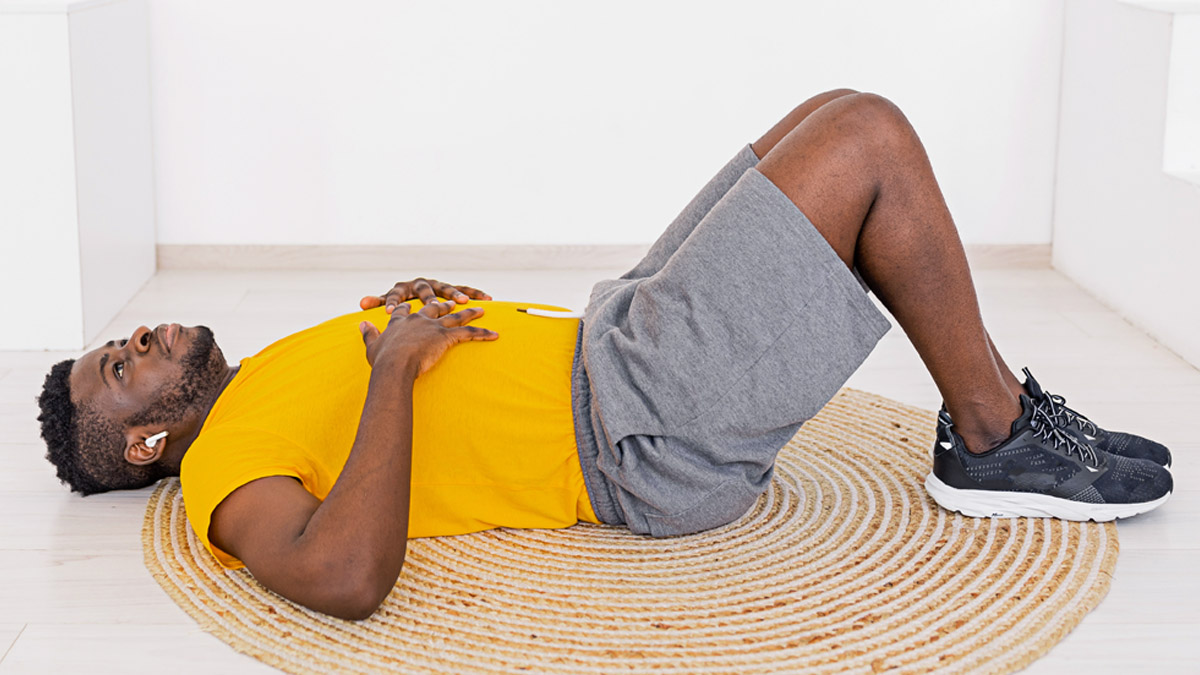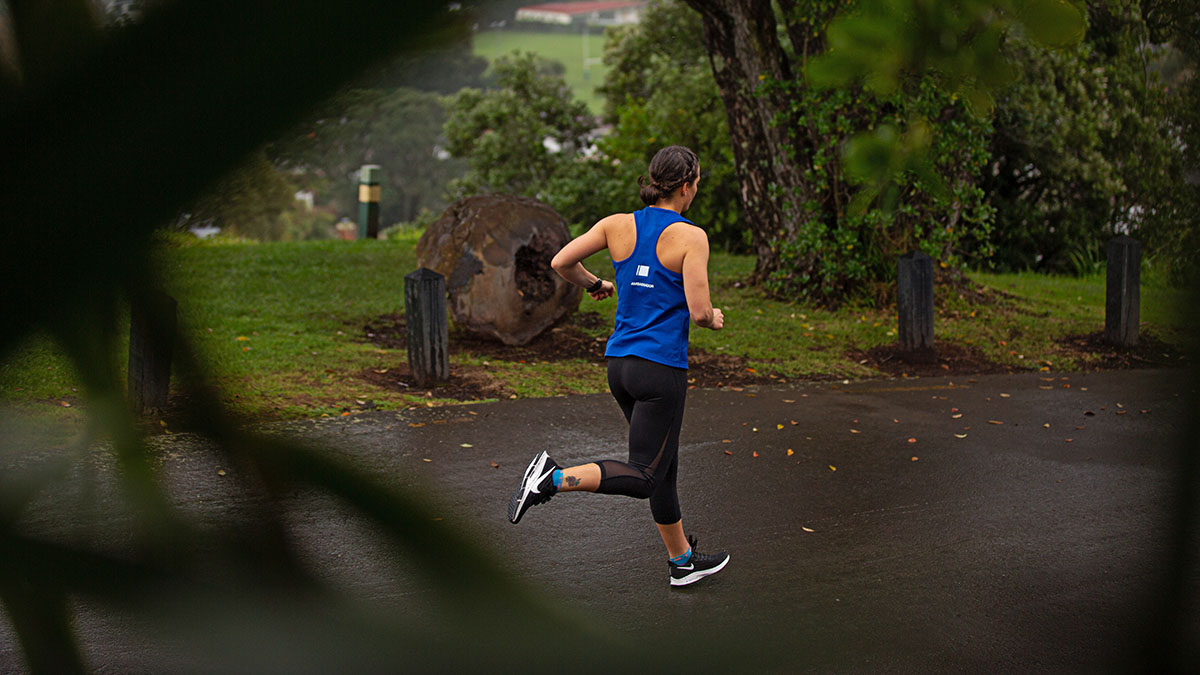Breathing — if you ain’t dead, you’re OK, right?
Well, not really.
Over my years as a coach, I’ve constantly been looking for the proverbial “diamonds on the floor.” These are the simple and extremely effective things we can do as human beings and athletes, which have a massive return on our performances.
First, it was experimenting with on-bike programming to determine the “least effective dose” for each individual and how we could build fantastic fitness without the junk miles and excessive intervals. Next, it was experimenting to find how to use strength training to improve both quality of life and performance on the bike.
While both of those journeys, and their mistakes and lessons, have each helped my athletes, clients and coaches I’ve mentored, neither holds a candle to the cascading positive effects of working on breathing, which we are about to dive into.
Learning how to breathe better offers us, as human beings (let alone as athletes) improvements across a wide number of bodily functions and systems: From your internal (hormonal) environment to the resting state readiness of your nervous system, and especially your ability to hold advantageous positions and postures for your sport.
Starting around the late 2000s, breathwork began to surface more in the mainstream media, specifically for meditation and recovery. Thanks to the “yoga wave,” more folks found the calming and relaxing effects of this once far-eastern spiritual practice.
Then ice baths started to become “a thing” outside the gyms and the athletes/students of leading coaches in various sports. While Wim Hof’s breathing method found its way into the athletic world, there is much more to “breathwork.” This is especially true for endurance athletes.
The Benefits of Breathwork
In 2001 I was introduced to the importance of better breathing and the specific use of inhalation and exhalation for performance by my powerlifting coach. Powerlifting, while it’s about as far from cycling and triathlon as possible, helped me first learn how proper breathing can literally make or break an athletic event. While it was eye-opening to see how much more I could lift with proper breathing before, during and after each lift, those learnings are just scratches on the surface of what we’re about to discuss.
- Big things can be accomplished by using breathing in your training, including, but not limited to:
- Enhance and improve movement
- Better mobility (i.e., external rotation of the shoulder, internal rotation of the hip, thoracic extension)
- Improve Tidal Volume (how much air you can take in each breath)
- Quicker recovery between training sessions
- Improved Movement
- Reduce or resolve chronic neck and shoulder tightness
The main benefits of focused breathwork as part of a performance-oriented strength training program boils down to two main points:
- Help manage or eliminate pain.
- Improve performance.
How can this one, naturally ingrained, essential survival thing do so much?
Simply put, efficient breathing patterns help stabilize our spine. (1)
The midsection muscles provide stability for the spine and maintain a great position of the ribs and pelvis by allowing the diaphragm and pelvic floor to align, enabling us to regulate internal pressure and direct airflow into different parts of our torso. As noted in my previous essay here on TrainingPeaks, “Why Balance Training is NOT Core Stability Training,” we must properly tune the guy-wire system to work in good balance.
To unlock better positions, postures and performances, we need to work on spine stability, such as the five different progressions outlined in that essay and include focused, purposeful time working on breathing.
Let’s dig deeper into why breathing should receive this attention and time.
Why is Breathing so Important?
When it comes to our being, especially as a human body, breathing is the very foundation of our system.
When we have a healthy and robust breathing pattern, our diaphragm and pelvic floor move together, which helps us to manage intra-abdominal pressure properly. Poor breathing patterns and, thus, poor pressure management, play a role in lower back pain, hernias, pelvic floor prolapse and even hemorrhoids, just to name a few that most will be familiar with.
How we, either passively or actively, create this intra-abdominal pressure from the force with which we breathe, as well as if we can direct that airflow, has a massive effect on your internal environment. The simple act of focused breathing can have an enormous impact on whether you stay in a stressed status long after your training or if you can turn on your parasympathetic nervous system and thus begin the all-important process of adapting to your training.
Breathe poorly? You will stay in a stressed status much longer…which means more prolonged recovery and adaptation times. If you’d like to learn more about adaptations, Tim Cusik shares some of his deep insights on my podcast.
What Does “Good Breathing” Look Like?
To get “good breathing patterns,” we want to learn to allow our ribs to move up and out 360 degrees. Up and out to the sides, with our mid and upper back also expanding along with the ribs in the front, much like opening up an umbrella.
Poor breathing patterns, where we inhale into the front of our chest and bellies, means that our primary muscles for inspiration, the diaphragm, intercostal muscles, as well as the critical serratus anterior muscles, are opening more like a broken umbrella: only opening on one-half, with the other half being stuck in the down position.
Good breathing patterns are something that many cyclists and triathletes need to improve. What often happens, especially as we tire on the bike, is our breathing tends to go down into the belly, which creates uneven tension in the guy-wire system of our “core” and up into the neck and shoulders.
When you’re working hard on the bike, you may have some belly breathing happen, but this should be alongside your breath going into your mid-back and sides- The total 360!
The problem with these poor breathing patterns, where we are breathing up into the neck and shoulders, is that the secondary accessory muscles (for breathing) tend to get tight and then press on the brachial plexus- the nerves to the upper body- which can cause not only a shallow breathing pattern but also hand and arm numbness or tingling.
These symptoms, of neck, shoulder, and upper back pain along with numbness and tingling in the fingers and arms, is a fairly common occurrence for cyclists, which I’ve seen as both a bike fitter and cycling and triathlon coach. I’m sure you can name at least a few folks you ride with who also suffer these symptoms.
Additionally, proper breathing patterns allow the diaphragm to expand correctly, which relaxes our psoas (tight hip flexors, anyone?), activates the “core” (in this case, everything between your neck, shoulders and hips) and pelvic floor more evenly, and helps the muscles along our lower back (quadratus lumborum, transverse abdominus and the paraspinals) to perform their jobs better more effectively. Good breathing patterns can also relieve neck, sacroiliac (SI) and lower back pain, as the stress for these muscles to “hold you up” is reduced, thanks to intra-abdominal pressure allowing the guy-wire system to work as intended.
This interface of breathing and effort pretty much covers the vast majority of pains that many cyclists and triathletes have when they’re on their long rides:
- Neck & upper back pain
- Tingling/numbness in the hands and arms
- Tension headaches from the above
- Low back and SI pain
Are learning good breathing patterns really going to work that well?
Yes!
Learning to breathe better can help alleviate these tight spots that you’ve probably been stretching and foam rolling forever and still haven’t resolved. However, it does take time and focused, purposeful practice.
Shallow Versus Deep breathing
When we don’t use proper breathing, it can leave us with one tool: shallow breathing. As an endurance athlete, this can mean leaving huge amounts of performance that you have untapped!
Think of these two breathing patterns as follows:
Deep breathing is like opening that umbrella. Your torso moves up and out in a full 360 degrees. Good breathing patterns allow your ribs and flanks to move up and out and your mid-back to expand backward.
Deep breathing also involves the internal intercostals, the serratus anterior, your obliques and abdominals all work to help get that deeper breath. Recall earlier that article about the guy-wire system of your core needing good breathing to keep the system properly tuned.
While shallow breathing is more like a pump handle, it only moves up and forward. Most of the air goes into your mid-chest and maybe belly, but most is stuck up top. This leaves a lot of work for the muscles, fascia and ligaments to do to stabilize your spine and hips.
As endurance athletes, pushing the limits of the body, we want to give ourselves as much of an advantage as we can, which in this case, is absolutely massive.
How Do You Know How You Breathe?
For a quick and simple assessment, watch yourself breathe in the mirror, from the side and from the front. I’ve often found that when you watch yourself live, we tend to “try harder” to be better, so instead, film yourself when you’re making food or doing some other standing-still task.
You’re looking to see if you are breathing only into your chest and shoulder:
From the front:
- Do you see your shoulders moving up toward your neck like a shrug?
- Do you see your chin poking forward?
- Are your shoulders stuck up toward your ears?
- Is only your upper chest moving?
- Do your ribs move up and out to the sides as you breathe?
From the Side:
- Does your head sit over your ribs and hips or in front?
- Are your ribs moving both forward and back?
- Does the area between your shoulders expand back?
- Does your belly move in and out, but your ribs stay the same?
Or, if you prefer to go back through your (detailed) training logs or just talk with your coach or training buddies, ask or look to see if you complain of chest and neck tension or if you get tingling and numbness through your hands when riding or running. Chances are that if you have had these, you’re in a shallow breathing pattern—both in your sport and throughout the day.
Common Issues for Cyclists and Triathletes
Belly breathing is NOT correct deep breathing!
I, too, made the mistake for a few years of coaching belly breathing as “deep breathing.” But I found that my clients and athletes had more low back pain and even hip flexor “tightness.” After some tinkering and going through more learning, this makes total sense. When you breathe, the movement of the ribs should be with a full 360-degree expansion through the ribs and flanks, not just down into the belly! In fact, too much belly expansion can actually shut down the flanks and back from being able to flex and extend. This creates pressure and pain in the lower back- due to being in an extension position- which also puts our hip flexors under strain.
Rib Flare
Rib flare is common in the cycling world.
Rib flare is when your ribs are either pointed up at the front (Lay on your back, and your ribs will point up) or your ribs are open and flat at the bottom (wider than 90 degrees, where the bottom of your ribs looks flat, instead of at an angle) and out to the side.
When you’re in these rib flare positions, the diaphragm loses its dome-like shape, which makes it far less effective at its jobs. This flattening of the diaphragm also negatively affects the position of the pelvis, which can lead to the hamstrings tightening down to try to stabilize the pelvis. Working on your breathing pattern, over time, can also help you decrease the strain on the hamstrings.
If your hamstrings feel tight as you get tired on your ride, you may lose your ability to maintain the guy-wire tension through your “core” as you tire due to the muscles involved in your breathing becoming out of sync when you fatigue. This can happen despite being strong in regular strength training. Your breathing abilities may be compromised when you get into stressed breathing during intervals or harder efforts out on the road.
Learning How to Breathe Better
Breathing better and ingraining new positions and patterns takes time and focused effort. Over the last 10 years or so here at Human Vortex Training, I’ve found that putting the breathing exercises at the start and end of each strength session, and many times each ride or run, goes a long way in helping our athletes see faster, more steady success.
But the reasons for the warmup and cooldown differ slightly and you must understand each.
Why Breathing in the warmup
-Bring you back down into a parasympathetic status (rest and digest) before creating other stress.
-Allow you to become more conscious of tightness in your body.
-Dial into what is moving well versus what may be a little tight or stuck today.
-Mobility for the spine, pelvis and hips.
-Dynamic stretch and release of the psoas, abs and lower back muscles, better preparing you for the movements you are about to do.
Why Breathing in the Cooldown
-Return you to a rest and digest status to kick-start recovery and adaptation
-Allow you to become more conscious of tightness in your body so you can consciously relax
-Reinforce good breathing and movement patterns through the spine, hips and shoulders
-Mobility for the spine, hips and pelvis
-Maintain a more relaxed state for the psoas, abs and lower back muscles, helping you to spend more time in better postures and positions throughout the rest of your day.
Breathing Exercises
Let’s get down to brass tacks and give you some tools you can use.
For getting started in breathwork, there are three different ways I’ve found work exceptionally well over the years:
- Supine Hook-Lying
The supine position allows us to align the pelvis and ribs quickly and easily while learning better breathing strategies.
Mike Robertson has a fantastic video on this. He and I also sat down to discuss the importance of breathwork for athletic performance, which you can listen to here.
The Crocodile Breathing exercise is my other go-to starter, as it allowed the client to quickly and easily feel the mid and lower back, flanks and chest, filling with air.
I’ve found this version of the prone (Crocodile) breathing to be very helpful for those who tend to have trouble releasing their neck and shoulders for the crocodile breathing. It’s also great to transfer the newly ingrained crocodile breathing strategies over to the bike, which is why it was included in Strength Training for Cycling Performance. The two levels shown here are great, allowing athletes to ease into more “advanced” in-sport-like postures.
Conclusion
Breathing, that life-gifting process we all do subconsciously, has far more to offer you and your athletes. From helping to improve mobility and decreased pain to helping you kick-start the all-important adaptations to the time and effort you put into your training, learning how to breathe better offers you fantastic asymmetrical reward- should you do it with focus, intent and understanding.
References
- Hodges P., Heijnen I., & Gandevia S. (2001, Dec.), Postural activity of the diaphragm is reduced in humans when respiratory demand increases: Journal of Physiology (2001), 537.3, pp.999–100. Retrieved from https://pubmed.ncbi.nlm.nih.gov/11744772/








